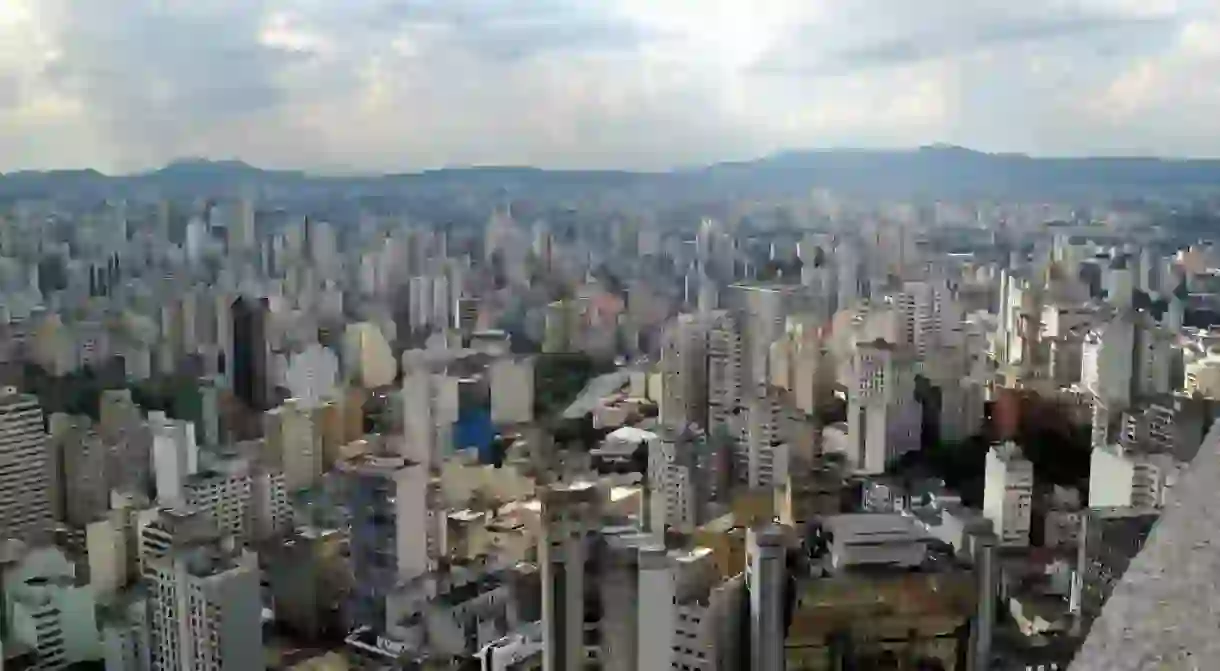The Best Way to Enjoy a Sunday in São Paulo

There’s nothing quite like the end of the week in São Paulo. In a city that most often feels electric, Sunday is a quieter day when the metropolis can catch its breath. Here’s our guide to an ideal Sunday in São Paulo.
Eat breakfast at the local padoca
The “padoca” is a great feature of culture in São Paulo, and it combines the city’s love for food and community. A padoca is a large bakery with vast seating areas, and it also serves as a market, convenience store, restaurant, café, and bar. Padocas are typically the social hubs of a neighborhood, and they are excellent places to grab Sunday’s breakfast.
One of São Paulo’s top padocas is Bella Paulista. Like most establishments of its kind, it is open 24 hours a day. A typical breakfast includes pão na chapa (a French bread roll covered in butter and toasted on the griddle), scrambled eggs, a glass of fresh orange juice and café com leite (a simple white coffee). However, Bella Paulista’s menu resembles a thick book and offers a slew of options, including a breakfast buffet.
http://instagram.com/p/BTFHkzqDSRf/?taken-by=padariabellapaulista
Bella Paulista, Rua Haddock Lobo 354, Consolação, São Paulo, Brazil +55 11 3129-8340
Take a walk down Paulista Avenue
Since late 2015, Paulista Avenue—São Paulo’s main thoroughfare—has been closed to traffic and open to pedestrians every Sunday. That is, for one day per week, a busy and noisy street is transformed into a wonderful, open promenade.
After breakfast, a stroll down Paulista Avenue is a great way to spend Sunday morning. The street fills with families, couples walking their dogs, joggers, children, and cyclists. Artistic displays and musical acts also line the streets.

Visit MASP
The São Paulo Museum of Art, known locally as MASP, has one of the best collections of Brazilian and international art in the whole country. MASP’s gorgeous building was designed by Lina Bo Bardi. Made in the Brutalist style, the entire glass and concrete structure is elevated above the road by four large beams, giving the museum the illusion of floating. The main gallery is one large, open-plan room, and the pieces of the permanent collection are housed in glass display cases designed by Bo Bardi herself.
The space underneath the museum is often used for cultural events, like the MASP Antiques Fair on Sundays.

São Paulo Museum of Art – MASP, Avenida Paulista 1578, Bela Vista, São Paulo, Brazil +55 11 3149-5959
Walk around Liberdade, São Paulo’s Japantown
São Paulo’s current population is made up of people from various heritages, all of which intermingle beautifully. One of the largest immigrant groups in São Paulo comes from Japan; the city has the largest Japanese population outside of Japan itself. This East Asian influence is best experienced in the central neighborhood of Liberdade, which has a huge concentration of first, second and third-generation immigrants from Japan, China, and South Korea.
The neighborhood has an East Asian aesthetic, complete with many Japanese and Chinese restaurants and stands selling Japanese-language newspapers. During the weekends, the neighborhood hosts an Arts and Culture Fair, making it an excellent place to visit on an early Sunday afternoon.

Go to a football match
Football is Brazil’s national sport, and São Paulo perhaps takes it more seriously than other places in the country. The city hosts three major football clubs—Corinthians, Palmeiras, and São Paulo FC—which each have stadiums. The clubs consider themselves each others’ rivals. A Sunday afternoon tradition in Brazil is to watch a football match, either in a bar or live. Tickets are often available to buy at the stadiums themselves, while there are also independent tour services that provide an authentic match experience without the hassle.

Have a traditional Italian dinner
In addition Japanese culture, Italian culture is also prevalent in São Paulo. It’s also historically one of the largest immigrant communities in São Paulo. Many Italians moved across the Atlantic Ocean at the end of the 19th century in search for work. Today, the city’s Italian population has had a massive influence on São Paulo—especially with food.
Traditionally, popular São Paulo diners follow a strict menu rotation throughout the week. Wednesdays and Saturdays are for feijoada. Mondays are for virado à paulista, while chicken stew is for Tuesday and fish for Fridays. Thursdays and Sundays are reserved for the crux of Italian cuisine: pasta.
Every Sunday evening, traditional Italian cantinas in the neighborhood of Bixiga are filled with families paying homage to their roots.
http://instagram.com/p/BTF0eKTFiFn/?taken-at=227853380













